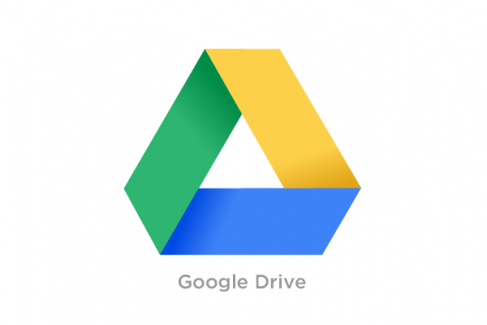6 Reasons to Start a Content Calendar (And How to Make One)
On the way home the other day, I heard a great story on the radio about mise-en-place, a French phrase that means, literally, “put in place.” It’s a chef’s regimen of making the ingredients and tools needed for cooking available ahead of time. But for culinary pros around the world, mise-en-place is a way of living.
It’s not just cutting up celery before heating up the stove — the organization needed to manage the overwhelming amount of variables involved in gastronomy is a religion to some cooks.
“I know people that have it tattooed on them,” says Melissa Gray, a senior at the Culinary Institute of America in the NPR article. “It really is a way of life … it’s a way of concentrating your mind to only focus on the aspects that you need to be working on at that moment, to kind of rid yourself of distractions.”
While we might be better at Chef Boyardee than Coq a Vin, (and we might have made cooking mistakes in the past) the same regiment of meticulous organization permeates what we do with content.
To keep distractions at bay and focus on content for our clients and ourselves, we have a slavish devotion to our editorial calendar. If you have a blog or other content efforts without a content calendar, you’re missing out.
Here are six great reasons to start your content calendar now (and a quick guide to making one).
It Forces You to Define Purpose
The purpose of McDonald’s is to sell hamburgers. The purpose of Des Moines Public Schools is to educate children in the area. Every business has a different stated purpose, and yours is undoubtedly no different.
The purpose of an editorial calendar is not implicit, nor is it obvious. McDonald’s editorial calendar would be wildly different than Des Moines Public Schools, because they have different goals and different target audiences. When you’re creating content — even when you’re just planning things out initially — you should define its purpose and which one of your personas your content is targeted toward.
Focus your calendar on the top priorities for your purpose, and whittle down the bottom priorities so your calendar is easier to manage and is more focused.
It Makes You Collaborate
Everyone in your office is good at something, but together you’re even better. But programmers probably can’t write about graphic design very well, and vice versa.
Hold a twice-weekly editorial meeting, and bring members of each team together to learn more about burgeoning trends going on in each of their respective fields. Find out the things that have been bugging them, any large or small victories, and shifts in technology that might alter the way certain processes are done.
Congrats! You now have a full calendar of stories to write about, along with a group of authoritative people to write them. Isn’t collaboration fun?
You Stress Out Less
What’s your blog going to publish next Tuesday? Is it written yet? Who is going to write it? Is it partially written already?
If you’ve got a content calendar already, those questions are definitively answered in one place. If not, you’ll be asking four different people around your office, trying to chase down answers — maybe even writing a hurried article under the threat of deadline. It’s not a great time.
But with a content calendar, everyone is inexcusably on the same page, and there’s much less last-minute stress involved.
There’s a Centralized Place to Brainstorm
We all get ideas walking around the neighborhood, in the shower or someplace else that’s not in front of the computer at our desk. With a content calendar, you and your team have a centralized spot to put ideas instead of juggling scraps of paper or hurried late-night emails.
It’s Not Just for Blogs
They’re called content calendars for a reason: they encompass any time of content that you could throw at them. While blogging is the first use that comes to mind with a content calendar, setting up a calendar for Facebook, Twitter, Instagram or any other form of content you produce is just as practical of an idea.
It’s Easier to Repurpose Ideas
At the end of each month of content, look back through your content calendar at the articles you’ve written. (Ok, you can take a second to pat yourself on the back for having a hand in creating all this great stuff.)
Has each piece of content been shared? Has it been distributed through all of the appropriate social channels? Can you compile your content into another article? Can you answer a commenter’s question in another article?
There’s a hundred ways to jump off your current content to create new articles or social media posts. You just need to get creative.
How to Make a Content Calendar
There’s a thousand great reasons for a content calendar. They keep you from pulling your hair out, they keep your team on the same page and they help you distill your purpose. It just makes sense to use one.
But making one is a little more difficult. Here’s a step-by-step process to pulling it off:
Use Tools
One nice thing about content calendars: you’re not alone. There’s thousands of other organizations using content calendars, and there’s a host of tools out there to help you organize, collaborate and create. Some are free, and some are not. Here are a few:
• Kapost offers content planning, workflow and even analytics.
• If you’re a WordPress user, there’s a great editorial calendar plugin that works very well.
• The simplicity and synchrony of Google Drive is not to be understated. (In fact, that’s what we use here at Flying Hippo.)
Think About Priority and Buying Cycle
Depending on what your business does, think about the priority of each piece of content you write in respect to your purchasing process. Is your idea something that someone will read very early on in the process, or is it a small facet they’ll need to know right before buying? Does it answer a large question, or does is solve a very granular problem?
By really understanding the buying cycle of your product or service, you’ll open up a host of ideas for content. A great place to start is answering the most common questions you get from your customers.
Share It
Got a few ideas slated for the calendar? Perfect. Now the time’s right to share that calendar around the office, and ask that everyone add an idea or two.
Not every idea will be suitable for print, so make sure that each idea that gets written or produced fits in with your predetermined buyer personas. Collaboration is key for your content calendar to work around the office, so request article ideas be added regularly. You might even want to have an editorial meeting a few times a month to get things started.
Be Flexible
Miss a deadline? Someone not get an idea to you on time? Don’t worry about it. The purpose of content calendars is to make your life a little easier, not to make it formulaic and rigid. Feel free to stray from the mold as you wish.




